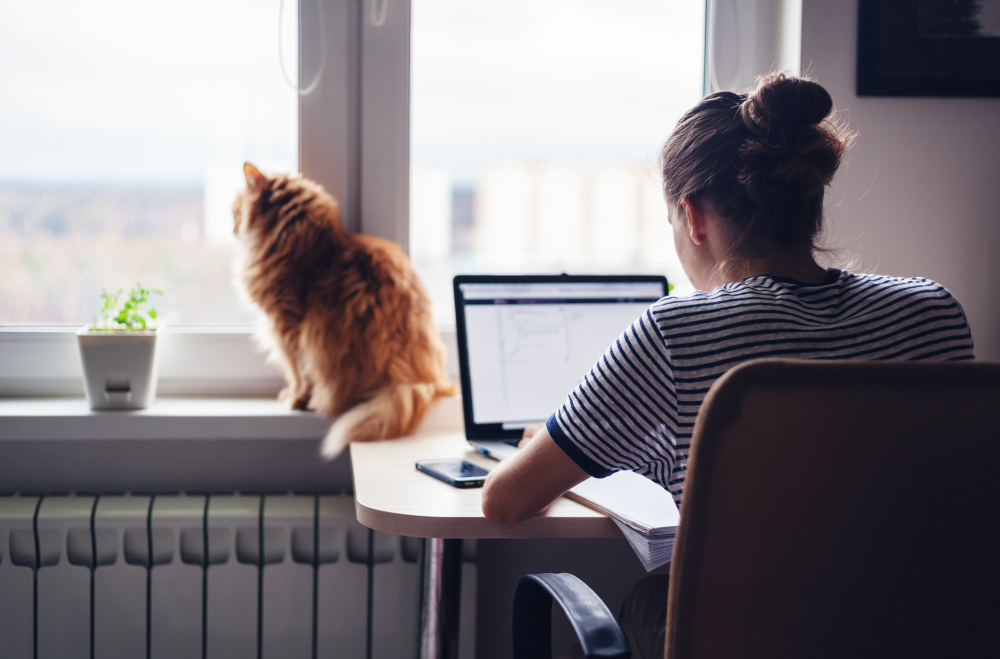Is your home office set up as healthy as it can be?
Experts on ergonomics and indoor air discuss how to work efficiently in the comforts of your home
For the majority of people around the world, working from home is uncharted territory that they have been forced to explore without prior preparations because of the pandemic. Freelancers, remote consultants and other flexible workers have learned to be as efficient as possible through months or years of finding out what works for them.
For most of us, we were shoved into this position, leaving us no time to explore. As months passed, we started to crave face-to-face conversations with our peers that simply cannot be gratified by Zoom meetings. We found it difficult to prioritise our workload, to stay motivated or to “switch off from work.” Some of us even found ourselves with bouts of insomnia because of the unprecedented situation.
Slowly, we learned to adapt. We took advantage of resources online that taught us how to separate work from home in the comfort of one’s own home.
Everybody adapted in their own ways. Some created a daily work routine to get them out of the rut, some dressed up and ditched loungewear to get a sense of normalcy and some even assembled their own workstations at home, complete with an office desk and chair set up, thanks to the host of sales and discounts offered by retail shops.
Eventually, we learned to accept the beauty of working in our own homes, without having to worry about the traffic and public commute. We took back hours spent in travelling to and from work, we learned to work happily without being caught up in office politics and drama, and we managed to cut off transportation and other expenses.
Though working from home did involve some adjustments with our personal lives and our mindset, Business Insider found that 54 percent of adults preferred to work remotely even after the pandemic. Yet, despite all these perks, most have neglected to take care of their physical wellbeing.
For the fourth installment of our webinar series organised by PropertyGuru Asia Real Estate Summit, wellness experts asked the viewers:
Are you focusing more on your work rather than your physical health?
Working from home is not just about having the right office tools, it’s also about keeping your physical health in tiptop condition. According to Michael Jones, the CEO and founder of mobility-based practice Pain-Free Me, maintaining the right posture is not only beneficial for your health, but also for your overall work productivity.
When working from home where we tend to be more immobile, our home office must be set up in a way that doesn’t compromise our posture. As a licensed therapist, he shared that most of his clients are either working on their dining table or on their couch, with their necks are slumped over the computer and shoulders are rolled forward, complaining about their lower back pain.
More: Rise of the digital economy and its impact on the workplace
Ideally, he said that the top of the computer screen or laptop must be within eye level to avoid looking down, so your shoulders won’t roll forward and your lower back won’t start hurting, eventually leading to a hunchback posture. To avoid this, he suggested buying a laptop stand online.
One of the most common bad habits that must be corrected is tucking your feet under your chair and crossing your legs at your ankle. He explained that this position shuts off the circulation going to the lower extremities, to the legs and this causes the muscles to become weak and inflamed. Avoid this by keeping your feet firmly planted on the ground.
Lastly, he advised to keep the shoulders down and to keep it relaxed, as well as to have a self-check every hour by setting an alarm on the phone until you have broken these three habits.
Since our hips are a very important muscle group where we get most of our force and could be linked to our lower back and knee pain, Michael shared this simple stretch called The Hip Opener:
- Sit on the edge of your chair
- Place feet hip-width apart directly underneath your knees
- Cross one ankle over the opposite knee
- Bend over, gently stretch forward
- Maintain the position for 30 seconds to one hour for every hour or every few hours
- Repeat with the other side
Are you breathing clean air indoors?
When we’re indoors, we rarely think about air pollution because we mostly associate it to dust, pollen, vehicle exhausts and factories, which are all found outdoors. But the truth is, these can all seep into our homes, exposing our loved ones to harmful substances.
As a matter of fact, the co-founder and CEO of uHoo Dustin Jefferson Onghanseng said that “poor indoor air quality is the world’s largest environmental hazard, primarily because what you don’t know you’re breathing can actually make you sick.” He explained that some people have gotten sick, asthma attacks or allergies from dust particles that they weren’t even aware were present inside their homes.
In heavily polluted cities such as Bangkok, Beijing and Delhi, air purifiers have become a household norm, but Dustin said that merely using this device isn’t enough. He explained that we need a technology that has the capability to “measure and understand the quality of air that you breathe so you know exactly how you can improve it” — and that is where their state-of-the-art indoor air sensor comes in.
uHoo’s device allows the user to view the quality of their air indoors, with recommendations on how to improve it based on the findings. Once connected to the wifi, it can be integrated with other devices, such as your air purifier, air conditioning systems, humidifier, lights and it can even automate your entire home.
More: Balance is the new normal: part 3. the workplace
Aside from the common culprits, several researches revealed that poor indoor air quality has been known to enhance the spread of COVID-19. To help the world combat the virus, Dustin said that they developed the uHoo Virus Index, “the world’s first, patent-pending, real-time assessment of virus survival and airborne transmission risk using air data.”
“All you have to do is to modify or tweak your environment so that it’s not suitable for COVID-19 to survive. That way, you can deactivate it and lower the risk of you contracting or it spreading within your home or within your workplace.”
While the work from home revolution has taken the world by storm, bear these insights in mind so you can stay physically healthy as you work to your maximum potential.
This is the first of a two-part series based on the Wellness & Real Estate 2020 webinar organised by PropertyGuru Asia Real Estate Summit. More than 100 viewers across the world joined the one-hour web conference held last 13th of August. For further enquiries, email [email protected]. Visit the official website AsiaRealEstateSummit.com and follow our social media for upcoming live webinar announcements.
Recommended
Meet the Bitkub CEO turning real estate on its head with cryptocurrency and tokenised ownership
Jirayut “Topp” Srupsrisopa, CEO of Thai crypto exchange Bitkub, is a true believer in the potential of digitised finance
6 sights to spot in Jardine’s Lookout, Hong Kong
With its sumptuous harbour vistas, this low-density area is one of the most sought-after in Hong Kong
Meet the architect rethinking disability in urban spaces and how cities can be reimagined
Author David Gissen outlines his vision for urban development that takes the needs of disabled citizens into consideration
Why Asia’s mixed-use developments are the future of real estate
Dynamic integrated communities are fusing real estate with commercial, leisure, and other amenities








